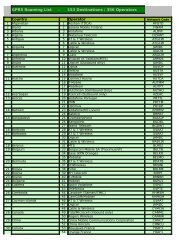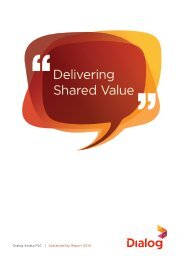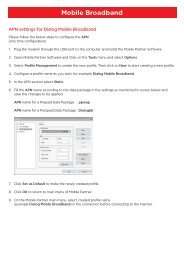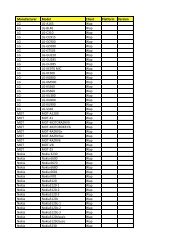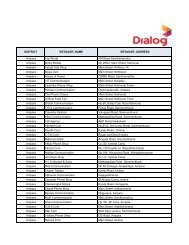Annual Report 2012 - Dialog
Annual Report 2012 - Dialog
Annual Report 2012 - Dialog
Create successful ePaper yourself
Turn your PDF publications into a flip-book with our unique Google optimized e-Paper software.
Acquisition-related costs are expensed as incurred.<br />
<strong>Annual</strong> <strong>Report</strong> <strong>2012</strong> l <strong>Dialog</strong> Axiata PLC l 59<br />
When initial accounting for a business combination is incomplete by the end of the reporting period in which the combination<br />
occurs, the Group reports in the financial statements provisional amounts for the items for which the accounting is<br />
incomplete. During the measurement period, the Group retrospectively adjusts the provisional amounts recognised at the<br />
acquisition date to reflect new information obtained about facts and circumstances that existed as of the acquisition date<br />
and, if known, would have affected the measurement of the amounts recognised as of that date. During the measurement<br />
period, the Group also recognises additional assets or liabilities if new information is obtained about facts and circumstances<br />
that existed as of the acquisition date and, if known, would have resulted in the recognition of those assets and liabilities as<br />
of that date. The measurement period ends as soon as the Group receives the information it was seeking about facts and<br />
circumstances that existed as of the acquisition date or learns that more information is not obtainable. The measurement<br />
period shall not exceed one year from the acquisition date.<br />
If the business combination is achieved in stages, the acquisition date fair value of the acquirer’s previously held equity<br />
interest in the acquiree is remeasured to fair value at the acquisition date through the statement of comprehensive income.<br />
Any contingent consideration to be transferred by the Group is recognised at fair value at the acquisition date. Subsequent<br />
changes to the fair value of the contingent consideration that is deemed to be an asset or a liability is recognised in<br />
accordance with LKAS 39, in the statement of comprehensive income. Contingent consideration that is classified as equity<br />
is not remeasured, and its subsequent settlement is accounted for within equity.<br />
Goodwill is initially measured as the excess of the aggregate of the consideration transferred and the fair value of noncontrolling<br />
interest over the net identifiable assets acquired and liabilities assumed.If this consideration is lower than the fair<br />
value of the net assets of the subsidiary acquired in the case of a bargain purchase, the difference is recognised directly in<br />
the statement of comprehensive income.<br />
Investments in subsidiaries are accounted for at cost less impairment. Cost is adjusted to reflect changes in consideration<br />
arising from contingent consideration amendments. Cost also includes directly attributable costs of investment.<br />
Inter-company transactions, balances, income and expenses on transactions between Group companies are eliminated.<br />
Profits and losses resulting from inter-company transactions that are recognised in assets are also eliminated. Accounting<br />
policies of subsidiaries have been changed where necessary to ensure consistency with the policies adopted by the Group.<br />
The financial periods of the subsidiary undertakings are same as that of the Company.<br />
When the Group ceases to have control any retained interest in the entity is re-measured to its fair value at the date when<br />
control is lost, with the change in carrying amount recognised in profit or loss in the statement of comprehensive income.<br />
The fair value is the initial carrying amount for the purposes of subsequently accounting for the retained interest as an<br />
associate, joint venture or financial asset. In addition, any amounts previously recognised as other comprehensive income<br />
in the statement of comprehensive income in respect of that entity are accounted for as if the Group had directly disposed<br />
of the related assets or liabilities. This may mean that amounts previously recognised in other comprehensive income are<br />
reclassified to profit or loss.



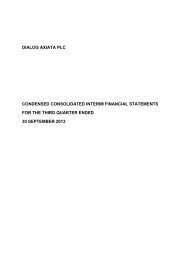
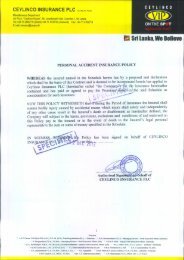
![nrypq;Nfh ,d;#ud;;]; nfhk;gdp ypkplw - Dialog](https://img.yumpu.com/15429071/1/190x245/nrypqnfh-dud-nfhkgdp-ypkplw-dialog.jpg?quality=85)
